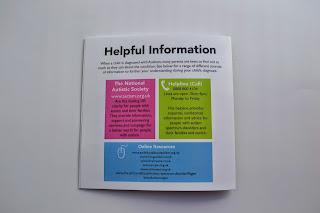Aristotle's works were written many years ago so therefore there has been several editions and translations of his work. From looking online at versions of his work and others around a similar time I have found that many were created on old presses or with ink by hand. The colours used were often purely black or sections of them were red. The poster needs to be two colours plus stock so therefore before considering the imagery used I am going to use black/grey ink along with red and an antique stock of some kind (an off white) this is to incorporate the age of the book even if the design is quite modern.
"Red ink in manuscripts goes back at least to the fifth century and flourished until the fifteenth. It must have been the spread of printed books, in which producing coloured text is very complicated, which eroded the doubtless standard medieval assumption that books were black and red. Printed books are just black, which is duller. Vermilion is mercuric sulphide, and is turned into red ink by grinding up and mixing it with white of egg and gum arabic. Red ink can also be made from brazilwood chips which were infused in vinegar and mixed with gum arabic. Brazilwood, one should explain, is not a native of South America - the country was named after its abundance of the well-known trees already familiar to makers of medieval red ink."
http://web.ceu.hu/medstud/manual/MMM/ink.html
You can see below some examples of how red is used to highlight important elements such as titles and writers.
This could be used as some form of spot colour on my book cover:
http://www.think-israel.org/jul07pix/palestine.book.jpg
https://tseday.files.wordpress.com/2008/09/bahera-haszab1.jpg
I also found older editions of Aristotle's books which include imagery it is often softly drawn or etched with lots of texture in grey/black. From looking back at my initial sketches it could be worth thinking about how imagery could work in this context.
http://upload.wikimedia.org/wikipedia/commons/4/49/Aristoteles_Logica_1570_Biblioteca_Huelva.jpg
Creating the illustration:
http://tstf.co/blog/wp-content/uploads/2012/07/Lioness-leaps-to-attack-crocodile1_thumb.jpg
Skeleton:
https://chasingsabretooths.files.wordpress.com/2013/05/compar-lion-homother-body-skel-low-res.jpg
Animal drawings: Cave/ prehistoric art
http://madamepickwickartblog.com/wp-content/uploads/2011/05/lascaux9.jpg
Initial sketch:
From looking at the detailed skeleton and muscle structures of a lion I simplified the lines into a structure which included small segments of muscle and bone but wasn't over complicated this ensures the book cover still feels quite modern instead of incredibly detailed studies.
I chose to illustrate this in pencils rather than ink or fine liners because a the inks in the older books I have previously looked at seem to be much softer and delicate. Using harsh lines could also draw attention away from the details in the illustration.
Scanned in: When scanned in it seems incredibly pale so therefore through experimenting with photoshop filters of colour this should ensure I stick to the 2 colour maximum.
From the research above I had decided upon using black/grey ink and red so therefore I looked at the tones of red I could use and created swatches.
Choice of red:
http://digitalsynopsis.com/wp-content/uploads/2014/09/color-thesaurus-correct-names-red-shades.jpg
I want a red that isn't too vibrant and can be representative of body colouring. The reds used in the inks of the older books I had previously looked at were a much richer and what I would describe as a classier red rather than something which is quite brash and bright.
I created a few swatches below on the one on the far right seems to be perfect as it isn't too dark but is still a vivid red.
Added filter:
From adding filters I felt as though the grey was more successful as it isn't as harsh as the red or black however I liked elements of these so I will try putting red into sections of muscle to be representative of inner organ colours.
Adding red to the muscle sections:
This is something I feel is much more successful than what I originally started out with as it is softer, includes simplistic lines and also textures which mimic the textures you'd get with an etching or with traditional printmaking methods. As with minimal time I will be unable to produce this in a traditional way I have tried to mimic this through digital editing however if I were to complete this with a longer time scale I would try and create this illustration into an etching or perhaps a larger screen print.



















































